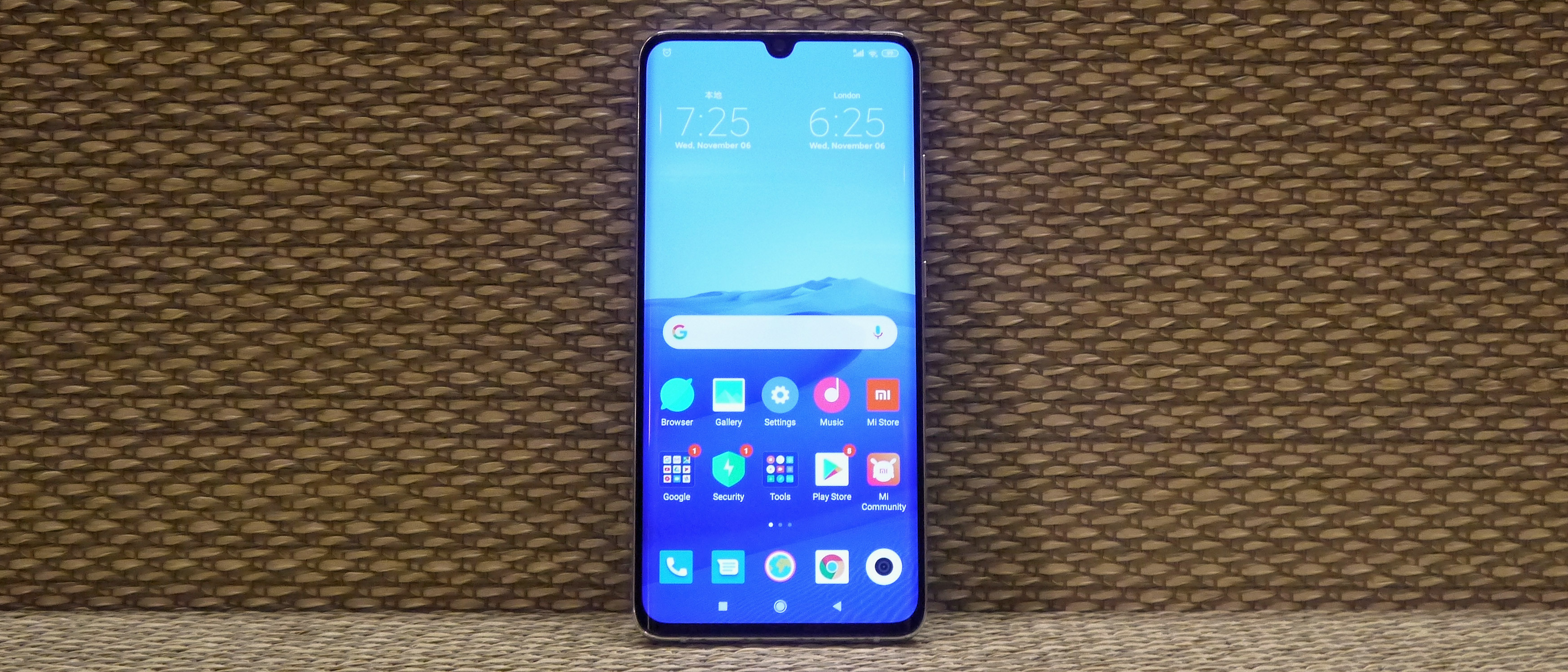TechRadar Verdict
The Xiaomi Mi Note 10 is a powerhouse in so many ways, from its camera and screen quality to its charging speeds and sleek look; it's just a shame there are a few weak spots which cast a shadow over the experience of using the phone.
Pros
- +
Incredible camera capability
- +
Swift charging speeds
- +
Top-end screen quality
Cons
- -
Weak chipset
- -
Bluetooth connectivity unreliable
- -
Battery life a little underwhelming
Why you can trust TechRadar
Two-minute review
The Xiaomi Mi Note 10 isn’t a phone you’d expect to be particularly revolutionary, being a mid-range device from Chinese budget tech brand Xiaomi, but it could be the device that makes the smartphone world sit up and take notice of so-called ‘budget’ Chinese brands.
That’s because the Mi Note 10 brings all the trappings of a top-end phone, but without the top-end price tag – it’s got a beautiful curved-edged screen, huge battery, in-screen fingerprint sensor, five rear cameras and, most notably, it was the first smartphone to come with a 108MP main camera sensor.
That camera dwarfs the iPhone 11’s 12MP and even the Huawei P30 Pro’s 40MP snappers. It’s an intriguing take on the smartphone camera conundrum – how can a phone snapper rival a DSLR? Unlike Apple, Huawei and Samsung, Xiaomi is relying on brute-force hardware rather than post-processing software, and the Mi Note 10 manages to take great pictures without AI tweaking the image to oblivion.
Saying it takes great pictures is an understatement, really, as the Xiaomi Mi Note 10 is one of the best camera phones around, especially if you’re on a budget. That’s despite some of its five rear snappers feeling a little inconsistent, and possibly redundant.
Beyond the camera, the Mi Note 10 is an impressive device in other ways, with its durable build, beautiful screen and incredibly snappy charging, but it’s also got an Achilles heel in the form of its mid-range chipset – the processor clearly struggles to handle 108MP pictures, and has trouble with some other tasks as well, so the spectre of this middling chipset is ever present when you’re using the phone.
Still, a premium phone competitor that retails for a (relatively) low price is inevitably going to have some weaknesses – and the more you use this phone, the more you’ll find that you’re able to ignore most of these shortcomings.
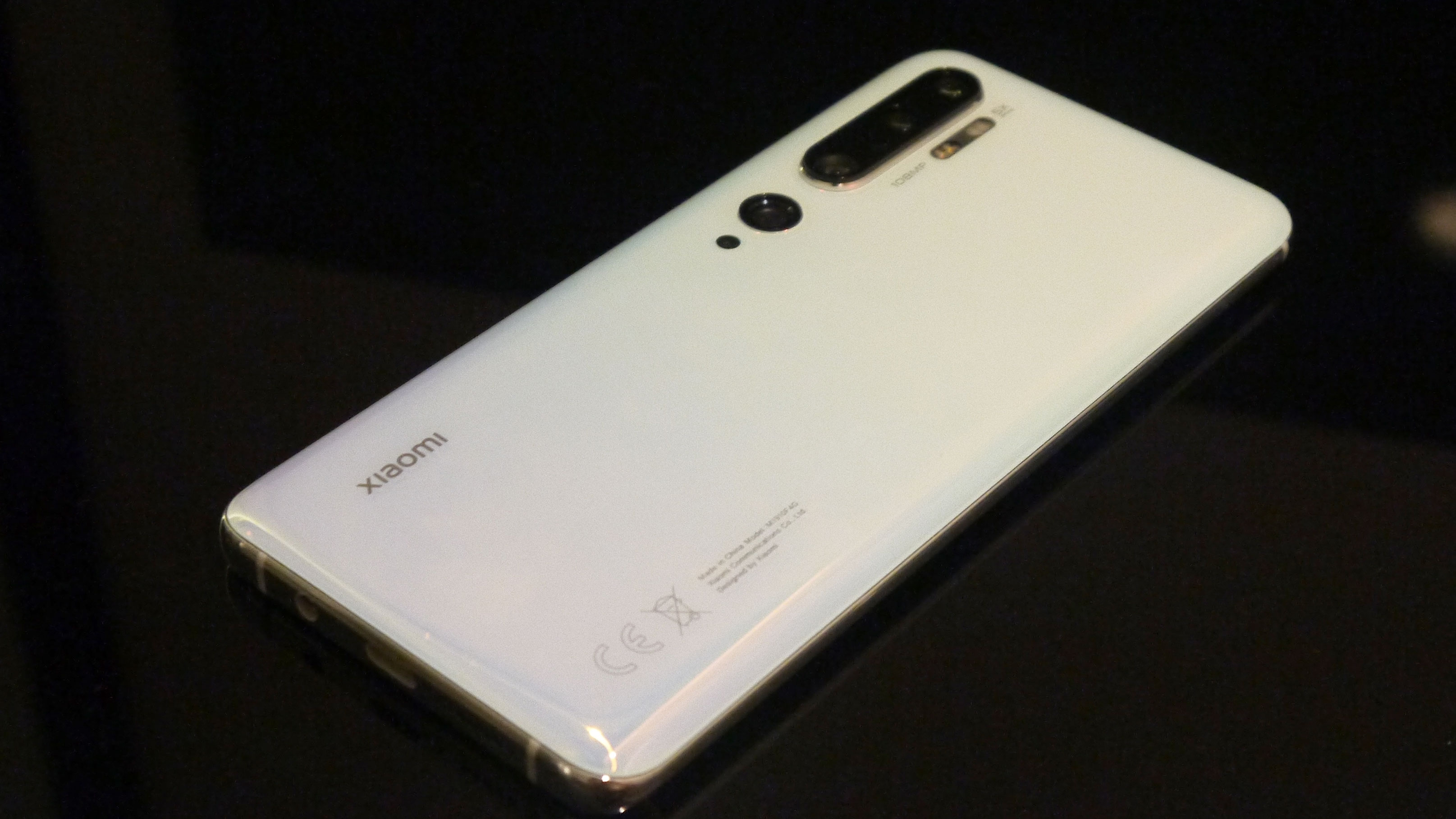
Xiaomi Mi Note 10 pricing and availability
In the UK, the Xiaomi Mi Note 10 officially went on sale on February 26, 2020. The Mi Note 10 price is £459 for the 6GB of RAM and 128GB of storage model. If you want more power and space, there's also a 8GB/256GB configuration which will set you back £549.
While those are the prices on Xiaomi's own site, the Mi Note 10 appears to be available just just under £400 on Amazon UK - so it could pay to shop around a little.
There's no word on the price or release date of the Xiaomi Mi Note 10 just yet in the US or Australia, but it's also available in Europe and costs €549 (around $610 or AU$880).
Design
The Xiaomi Mi Note 10 follows the ‘standard’ Android look and improves on it in a few ways; it’s not as distinct as the Oppo Reno or Huawei Mate 30 Pro, but it’s not identical to the legions of similar-looking Android smartphones either.
The phone measures 157.8 x 74.2 x 9.7mm, so it’s one of the thickest smartphones we’ve tested – you’ll likely notice this when you’re using the device, although we got used to it pretty easily. This thickness is reflected in the 208g weight, which again is relatively heavy for a handset, although we’ve used heavier devices.
The front and back of the Xiaomi Mi Note 10 are made of Gorilla Glass 5, sandwiching an aluminium frame, so the phone feels reassuringly sturdy.
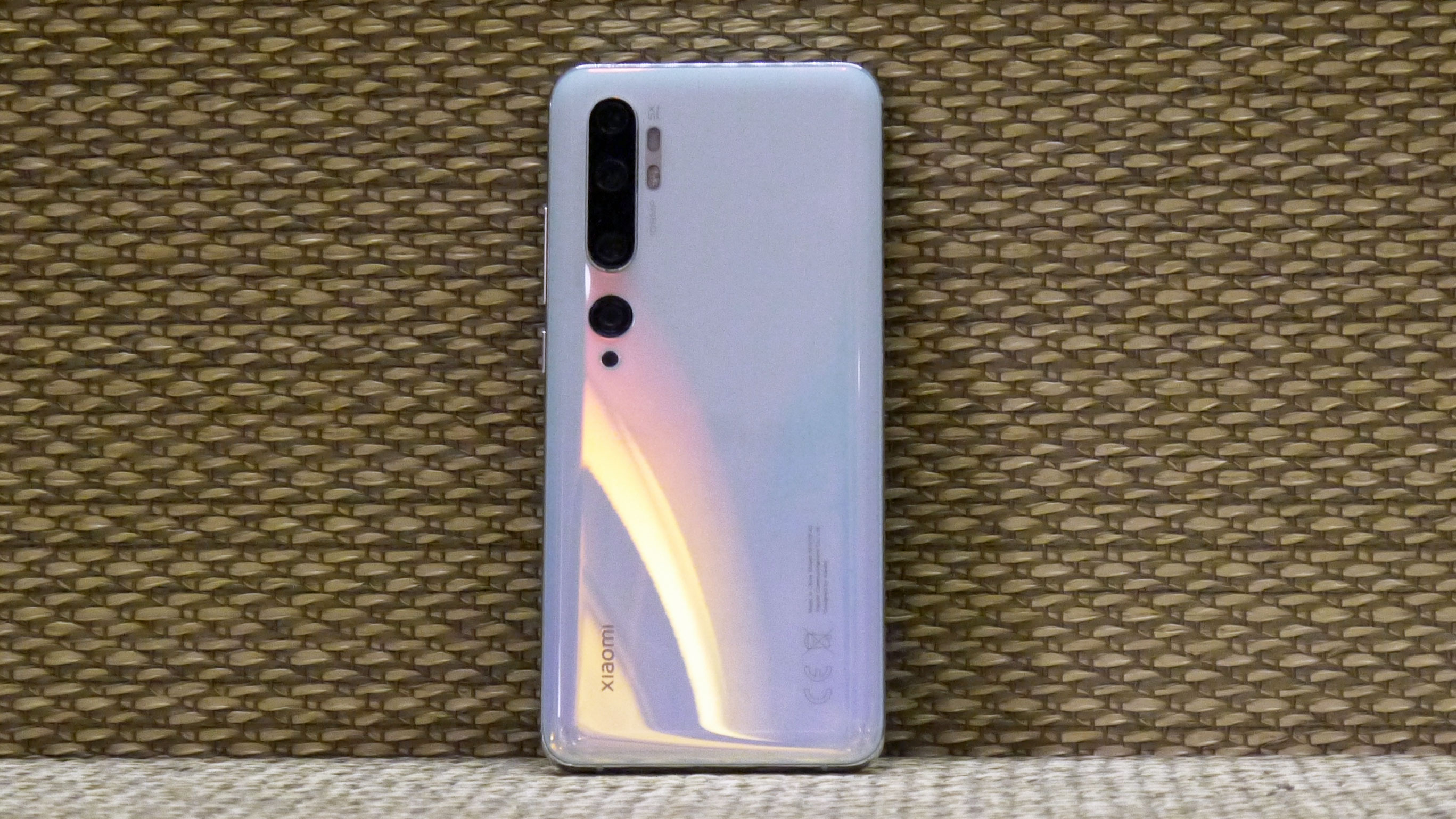
The Mi Note 10 screen is curved – more on the display shortly – and the rear of the smartphone is curved too, more so than on most other devices. This makes the edges of the phone feel noticeably rounded in the hand, and the device is therefore pretty comfortable to hold in the hand.
Around the edges of the phone you’ve got a standard USB-C port and 3.5mm headphone jack underneath, so users of wired headphones will find this one of the few devices they can still use without having to splash out on a Bluetooth pair. On the right edge of the phone are a power button and volume rocker, both low enough to be easy to hit with a finger for all but the smallest hands.
One gripe we have with the Mi Note 10’s design is the rear camera bump, which is pronounced, and sticks out a long way compared to the bumps on most phones. The edges of the bump on our review handset quickly became scuffed as a result, which (literally) took the shine off the otherwise sleek appearance.
It’s also curious that not all the cameras sit within the bump, as two are actually below it. This doesn’t change how you use the phone, but it gives it an odder, and less aesthetically pleasing, look than if all the lenses were included within the bump.
Display
The Xiaomi Mi Note 10 has a 6.47-inch display, so depending on the size of your hand it's just small enough to be easily usable with one hand, though for some users it might just fall into the ‘two-handed use’ camp.
The screen is an AMOLED panel with 1080 x 2340 resolution, and although AMOLED screens tend to look good, they don’t normally look this good on a mid-range phone. The colors really pop, max brightness is pretty high, images look textured and contrast is good. Most smartphones with screens this good are premium devices, and it’s rather rare to see mid-range phones with the tech.
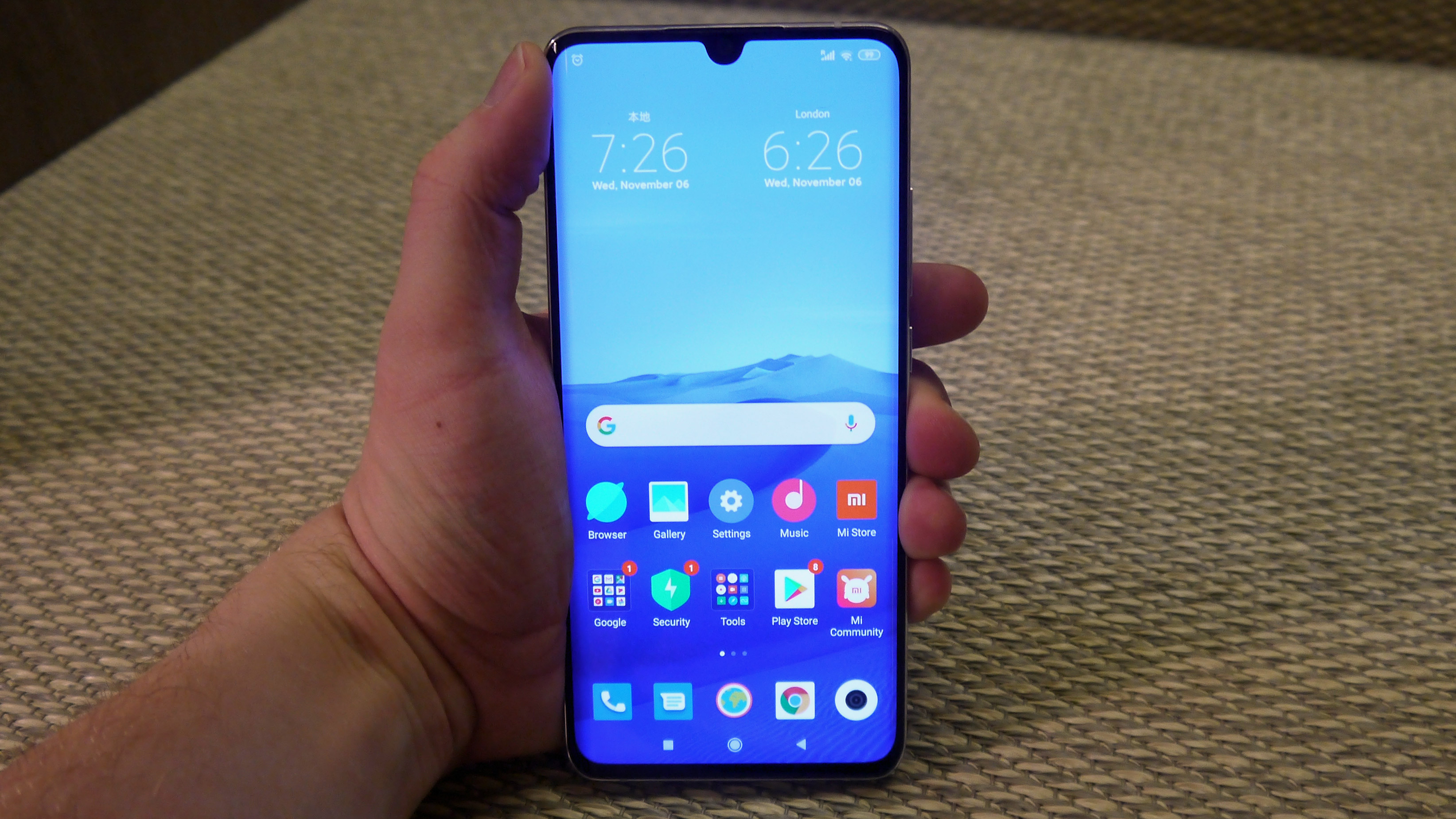
One thing worth noting is that, unlike on lots of other phones, there’s no double-tap to wake the display option, which may be a little jarring for people used to that method of waking their phone. Instead, you need to either press the power button, or if you’ve got fingerprint unlock enabled, you can hold your thumb on the in-screen sensor to wake the device.
As mentioned, the edges of the screen are curved, as on the Samsung Galaxy S10 or Huawei P30 Pro, however on the Mi Note 10 the curve is slightly more pronounced, which makes the phone easier and more comfortable to hold; however we did occasionally inadvertently press the curved edge when holding the phone, which could have irritating consequences like changing pages on an e-book we were reading.
At the top of the screen is a small teardrop notch in the center, which houses the front-facing camera. It’s not particularly intrusive, but other phones have alternatives such as punch-hole cutouts and pop-up cameras, so it’s a matter of personal taste whether or not you’re a fan of the notch.
Camera
The headline feature of the Xiaomi Note 10 is its camera: the 108MP main sensor is the first of its kind on a smartphone in the world, and it’s such an important part of the phone’s identity, and Xiaomi’s sales pitch, that ‘108MP’ is stamped on the phone’s rear.
This main rear camera is joined by a whole host of neighbors: there’s a 12MP sensor with a 2x telephoto lens for portrait mode; a second telephoto snapper, this one with 5x zoom and 5MP sensor, for zoomed shots; a 20MP ultra-wide camera; and finally a 2MP macro snapper.
Fortunately, given the weight of expectation falling on it, the main 108MP camera takes absolutely incredible shots. Forget the iPhone 11 Pro, Huawei P30 or even Realme X2 Pro – this phone takes some of the best-looking pictures you’ll get from a smartphone.
Everything here is on point: colors are rich, contrast is suitably stark or subtle to fit the photo, and images are bright. Pictures are automatically 4-in-1 pixel-binned to create 27MP snaps, but if you want (and you aren’t worried about running out of storage space) you can shoot in full-blown 108MP.

Everything here is on point: colors are rich, contrast is suitably stark or subtle to fit the photo, and images are bright. Pictures are automatically 4-in-1 pixel-binned to create 27MP snaps, but if you want (and you aren’t worried about running out of storage space) you can shoot in full-blown 108MP.
If you take 108MP pictures, you can zoom in on them after and you’ll find that the detail and overall quality hold up – this is great for people who edit their images, as it means you can crop pictures without worrying about them becoming too low-res. Not everyone will need to take 108MP snaps of course – it’s serious overkill for Instagram, for example – but it’s a fantastic option to have.
Taking 108MP snaps has another downside, in addition to filling up your storage, as the Mi Note 10 takes a while to process them – while this is happening you can’t take other pictures, view your snap, or leave the app. This can take from a few seconds to almost a minute in some cases, and while it happens occasionally with portrait, ultra-wide and normal shots too, it was much more of an issue with 108MP photos.
It’s an issue that stems from the device’s main weak point: its processor, which we’ll get into in the ‘Specs and performance’ section of this review. Suffice to say, it detracts from the photography experience somewhat, but the image quality isn’t affected – and it’s unlikely that you’ll be firing off 108MP images all day.
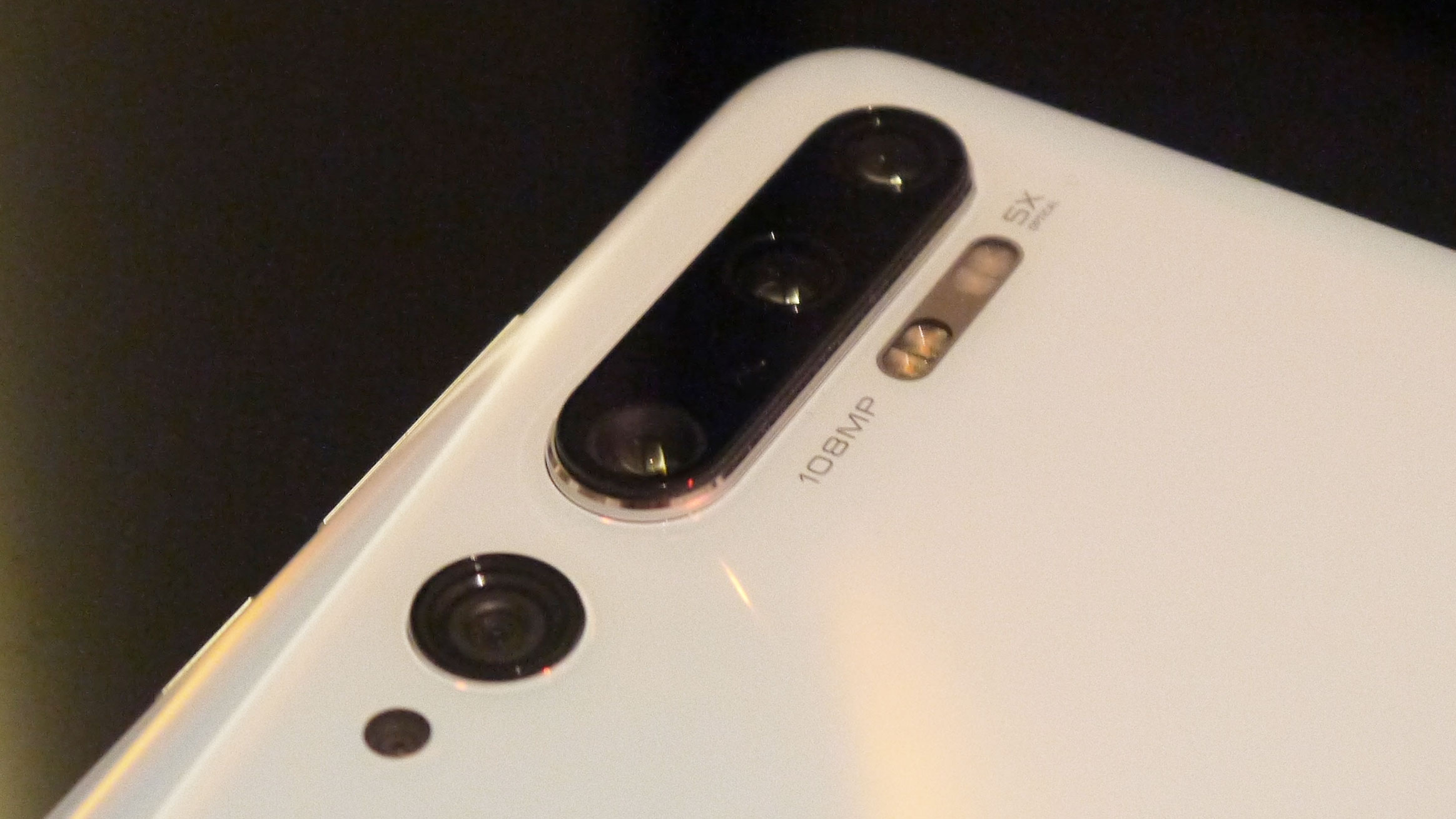
The next camera we’ll talk about is the 12MP portrait camera, and again it’s a treat to use. Snaps taken with it reliably detected the subject and applied appropriate background blurring, with little to no blurring of the subject, or any of the other issues you sometimes get with ropey portrait modes.
The only problem here is that the sensor is paired with a 2x telephoto lens, so when you turn on portrait mode this level of zoom is automatically applied, and you can’t zoom out. This often meant that we had to take a few steps back before taking a portrait shot, but we often find that we need to be a little closer than is ideal to the subject to capture a decent portrait on other phones, so this wasn’t the end of the world.
Below that telephoto lens is the second one, which is used for long-range zoom shots, and which offers 5x optical zoom. This snapper was a little disappointing, as the sensor is only 5MP, so even though it could close distances very well, the resulting pictures were a little grainy and dull. In fact, we often found it easier to take a 108MP snap and crop it to just the section we wanted (notwithstanding the issues with this camera mentioned above). This sensor really needs to have a higher resolution for zoomed shots to be any good.

Ultra-wide

1x zoom

Optical zoom limit

Digital zoom limit
Talking of redundant lenses, we really struggled to take any decent close-up pictures with the macro lens and its 2MP sensor. Macro shots were grainy and low-res, and again using the main camera returned much better results. This snapper feels totally redundant and, without wanting to sound too cynical, it feels a little like it was included to flesh out a specs list. We would have preferred to see a OnePlus 7T Pro-esque macro mode with an ultra-wide lens, rather than a weak dedicated camera like this one.
The final camera, the 20MP ultra-wide snapper, is decidedly ‘fine’. Pictures taken with it looked good, without unreasonable amounts of distortion, but we weren’t exactly blown away with the results. Saying that, this is the camera we used least in our time with the Mi Note 10, and we imagine it’ll be the same for most people.

We also encountered a problem with this snapper that we haven’t come across before on a phone. It’s rather low down the body of the device, and often when we were trying to take a picture with it we’d notice that our hands holding the phone would be in frame. Because of the way we hold our phone when taking pictures, this was only really an issue when snapping in portrait orientation, but we often had to reshoot pictures when we noticed our fingers creeping into the frame.
On the front, the Xiaomi Mi Note 10 has a 32MP camera housed in that aforementioned notch, and we had great fun playing around with its various filters and features. Selfies looked pretty vibrant and high-quality,and the device's software was apt at identifying and blurring backgrounds but not subjects.

A selfie without bokeh

A selfie with bokeh
So that’s the lenses covered, but for many people, how good a camera phone is depends on ease of use and features as much as it does on out-and-out image quality. As previously mentioned, the Mi Note 10 was sometimes a little slow in use, taking a while to process images. It also crashed occasionally, and we lost a few pictures this way if they hadn’t finished processing. Again, this is all down to the chipset, which we’ll get to shortly.
In terms of video quality, you can record up to 4K. This is despite 6K video recording being one of the touted features of the 108MP sensor, so the absence is curious, and when we asked Xiaomi about this at a product briefing, they didn’t seem to have much of an answer. Saying that, relatively few people would actually be able to make the most of 6K content, so it’s not a huge issue right now.
There are a few picture or video modes that some users will make the most of, but each had a drawback. Slow motion video is always a cool feature, however on the Xiaomi Mi Note 10 this is captured the ultra-wide snapper, but cropped to fit the same field-of-view as the main picture, which results in a loss of image quality. Vlog Mode is great for easily creating jump-cut short-form videos, but it only works with the rear cameras, so you can’t actually film yourself.
Night mode for stills here isn’t incredible, as pictures taken in this mode looked indistinguishable from snaps taken without the mode enabled. In fact, all low-light images from the phone camera looked a little noisy, regardless of which snapper was used, although the main camera pulled in enough light to compensate at times.
Our analysis of the Xiaomi Mi Note 10’s camera analysis may sound as if we’re quite down on them, and it does feel like Xiaomi tried to cram in loads of features here without fleshing them out properly, which is why there’s lots to critique. But the main and portrait snappers more than make up for the shortcomings of the rest, and overall the handset takes incredible pictures.
Camera samples

A macro shot, looking a little fuzzy and low-res

A low-light shot

The previously-shared 108MP shot

Another 108MP shot

A low-light 108MP shot

The previously-shared wide-angle shot

A selfie

An early-morning 108MP shot

A 108MP shot
Specs and performance
We’ve alluded to the Xiaomi Mi Note 10’s major weakness above, and now we can discuss it in more detail: the handset’s chipset just isn’t good enough. There’s a Snapdragon 730G chipset here, which is a decent mid-range processor that’s optimized for gaming, but in a phone that aspires to premium status it’s simply not up to the job.
The main knock-on effect of this is the aforementioned slow image processing times, and the fact the camera app (and a few other apps on occasion) have a tendency to crash, but we also feel the surprisingly mediocre battery performance (as we’ll get onto) could be a result of this too.
If Xiaomi was looking to create a phone that could genuinely rival the best from the likes of Apple and Samsung, it could have opted for the top-end(at least when the Mi Note 10 launched) the Snapdragon 855 chipset, which would have comfortably handled everything demanded of it.
However, ifyou look at the Mi Note 10 more as an accomplished mid-range phone, rather than a pretender to the premium throne, the sub-par processor becomes less of an issue, and you may feel that you can live with the occasional crash and short delay given the price of this handset.

When it comes to gaming, the Xiaomi Mi Note 10 makes the most of the Snapdragon 730G chipset, and we rarely noticed stutters while playing top-end games like Call of Duty Mobile. The screen quality made the experience pretty pleasant too, so if you’re looking for a good smartphone for gaming, you won’t go far wrong here.
The Mi Note 10 is available with either 6GB or 8GB of RAM. Officially the 8G version is called the Note 10 Pro, but other than extra RAM the only difference is that the Pro has 256GB of storage, rather than the 128GB of the base version, so there’s not a huge difference between the two,
Something that we found pretty impressive in the Mi Note 10 is the speaker, which delivers good quality audio with sufficient volume. It’s just a single mono speaker, and when you’re watching content or playing games you can accidentally cover it with your hand, but it’s a decent speaker for a phone.
The speaker is great for listening to music, but perhaps your wireless headphones won’t be – we had some issues with Bluetooth, when connected both to speakers and headphones, in that it would occasionally cut out or stutter. This didn’t make the phone unusable for music playback, but it was annoying when it occurred, which is something to bear in mind. The inclusion of a 3.5mm headphone jack means people who use wired headphones will be happy, though.
Software
The Xiaomi Mi Note 10 runs Android 9, which was the latest operating system available to Xiaomi devices when it launched, with the company’s MIUI interface laid over the top. MIUI’s aesthetic features rounded-square icons, and a muted color scheme. When we tested the Mi 9 we weren’t a fan of how the software looked, but a lot has been improved since then.
As with all third-party user interfaces though, whether you prefer it to other brands’ UIs is largely down to taste, as it’s mostly a matter of aesthetics, with perhaps a few differences in terms of features and navigation.
Some things aren’t governed by taste though, and MIUI has a problem that other Chinese phone companies have wrestled with in their own UIs: bloatware. The Xiaomi Mi Note 10 comes with a few pre-installed apps that we weren’t fans of, like web browser Opera and a few lightweight games. On top of that certain app folders (only ones that come already on the phone, none ones you create) suggest extra apps to download, which clutter up your phone. In general though, the problem is nowhere near as bad here as we’ve seen elsewhere.
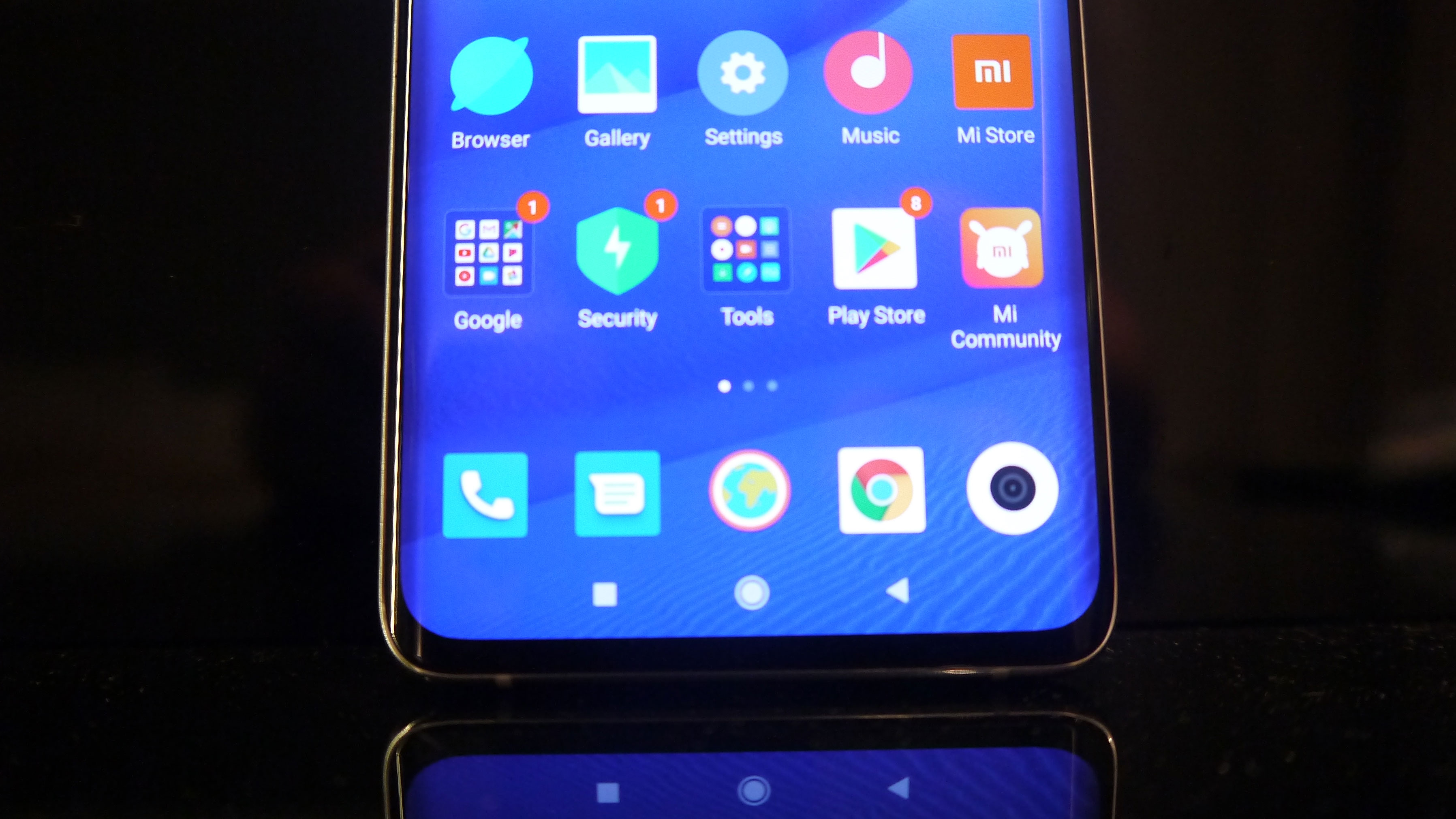
The Mi Note 10 doesn’t have an app drawer by default, so apps you download will fill up the home screen instead, but you can enable the app drawer in the settings menu.
In general, the phone’s interface felt pretty snappy to navigate. We rarely experienced stuttering when navigating the menus, and apart from a few large games, apps opened promptly.
One thing we really appreciated about the Mi Note 10 was its face unlocking, which is one of the fastest implementations we’ve used – sometimes the phone was so quick to unlock that we didn’t even get to see the lock screen because of the speed. This could be indicative of security issues though – it could be that the facial recognition tech isn’t advanced enough to properly analyse a face.
Battery life
The Xiaomi Mi Note 10 battery capacity is 5,260mAh, which is a lot bigger than you get in most modern smartphones – the iPhone 11’s battery is 3,110mAh, for example, which is fairly typical. You’d expect, therefore, that the Mi Note 10 would have superb battery life – at least a day and a half, or perhaps even two days – but that’s not the case.
In fact, we found the Mi Note 10 only lasted roughly a day between charges, which was a little underwhelming given to the huge size of the battery. Yes, that’s roughly how long most smartphones last, but most handsets have smaller batteries – and since the phone’s weight and thickness are likely down to the battery size, this means the extra heft is apparently for nothing.
We expect the culprits responsible for draining the battery are the high-quality display, as well as the particular chipset used here. Whatever the reason, one-day battery life isn’t exactly disappointing compared to other phones, but we were expecting a better performance.
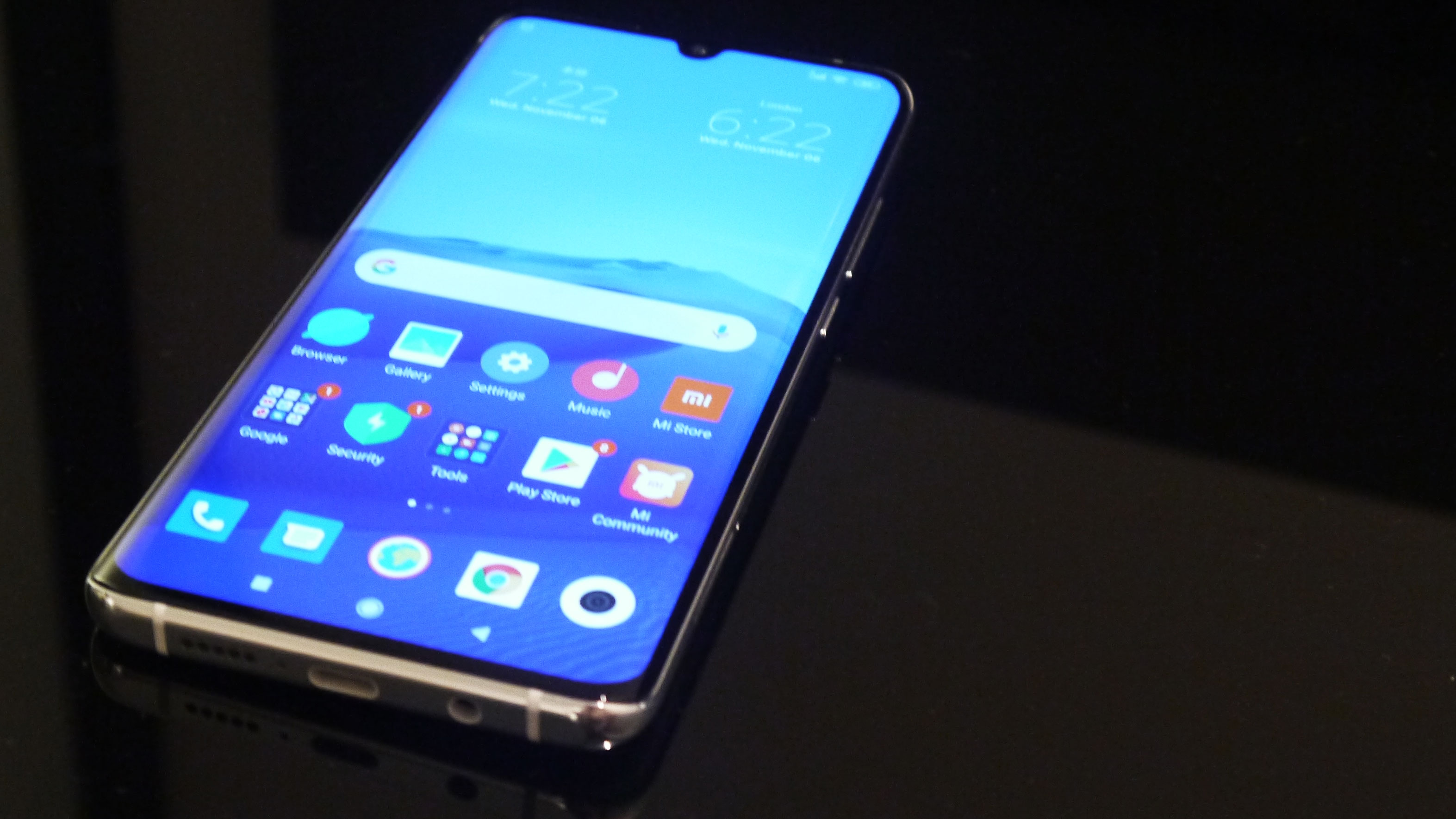
On the plus side, when we put the Mi Note 10 through our battery test, which involves fully charging the phone, turning the screen brightness to max, leaving Wi-Fi on, and playing a 90-minute video, it dropped by only 8%. That’s an impressive score, beaten in 2019 only by the Huawei P30 which lost 7%, and trumping basically every other smartphone.
This suggests the battery is optimized well for viewing content if not necessarily other functions, something with which we’d concur based on our time streaming media.
No matter whether the Xiaomi Mi Note 10 battery life and performance is good enough for you, there’s a feature that could make up for it, and it’s the charging speed – the 30W fast charging here is impressive, and will juice up your phone in no time.
In fact the charging speed was so fast that we got out of the habit of charging the Mi Note 10 overnight – the device was powered up enough as we got ready for bed that there was no need to leave it plugged in for the whole night.
It remains to be seen what this super-speedy charging does for the battery in the long run – it’s possible that it could damage the battery over years of use, so we’d advise not leaving the handset plugged in for ages unnecessarily.
Buy it if...
You want to take top-quality pictures
If you want to take incredible-looking pictures, or fantastic portrait shots, this is the phone for you. Sure, there are some advantages to owning a DSLR or mirrorless camera, but if you want to be able to take top-notch pictures with a phone, this is the one.
You want a phone that feels great in the hand
The curved screen and rear of the Mi Note 10 mean it feels good in the hand, regardless of how big or small your hands are.
You want a premium-esque phone without breaking the bank
Xiaomi has priced the Mi Note 10 super-competitively, and it’s got most of the trappings of a top-end phone without the price tag. So if you want a cutting-edge camera, curved-edge screen, and snappy charging, without paying top dollar, this is a great phone for you.
Don’t buy it if...
You hate notches
Xiaomi is sticking with the notch where others have dropped it, and if you don’t like even a small notch encroaching on your screen you won’t like the Mi Note 10 – you’d probably prefer a phone with a punch-hole or pop-up selfie camera.
You don't care about the camera
The Mi Note 10’s camera is its big selling point, so if you’re not the type who takes a lot of pictures with your phone, or you don’t need your photos to be top-quality, you’re not going to make the most of this phone.
You need lots of processing power
The Mi Note 10 can play games and media just fine, but overall its processor isn’t the best performer, so if you need buckets of processing power for multi-tasking you should look for a better-specced phone.
First reviewed: February 2020
Competition
Huawei P30 Pro
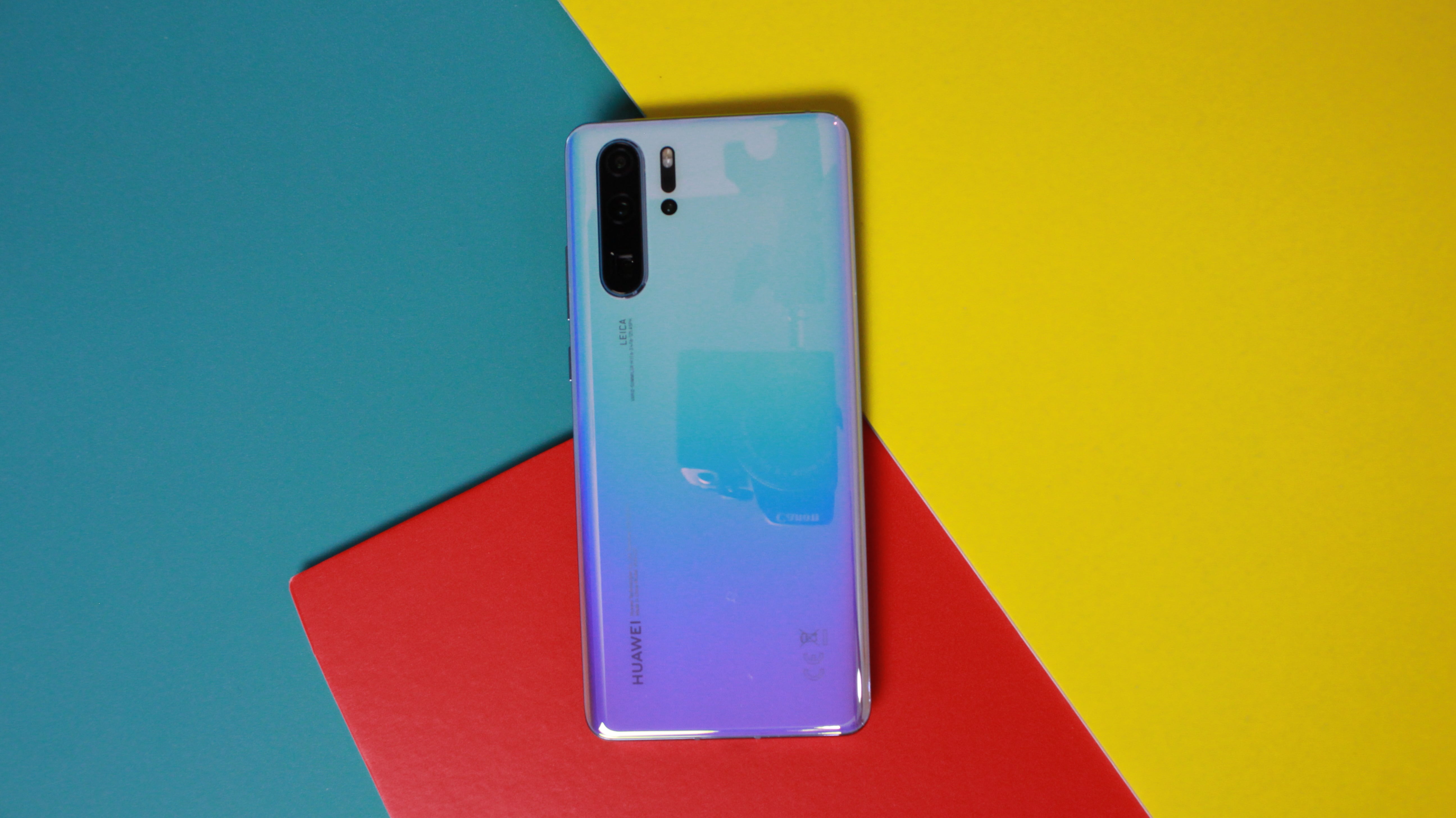
For a long time the Huawei P30 Pro topped our list of the best camera phones. While it doesn’t have the Mi Note 10’s incredible 108MP sensor, it’s got a range of powerful post-processing features, as well as some new hardware like (at the time) the most high-res camera sensor ever, that enables you to take some fantastic pictures. Since it launched its price has dropped a fair bit, so now it’s definitely a rival to the Mi Note 10.
Read our in-depth Huawei P30 Pro review
Realme X2 Pro
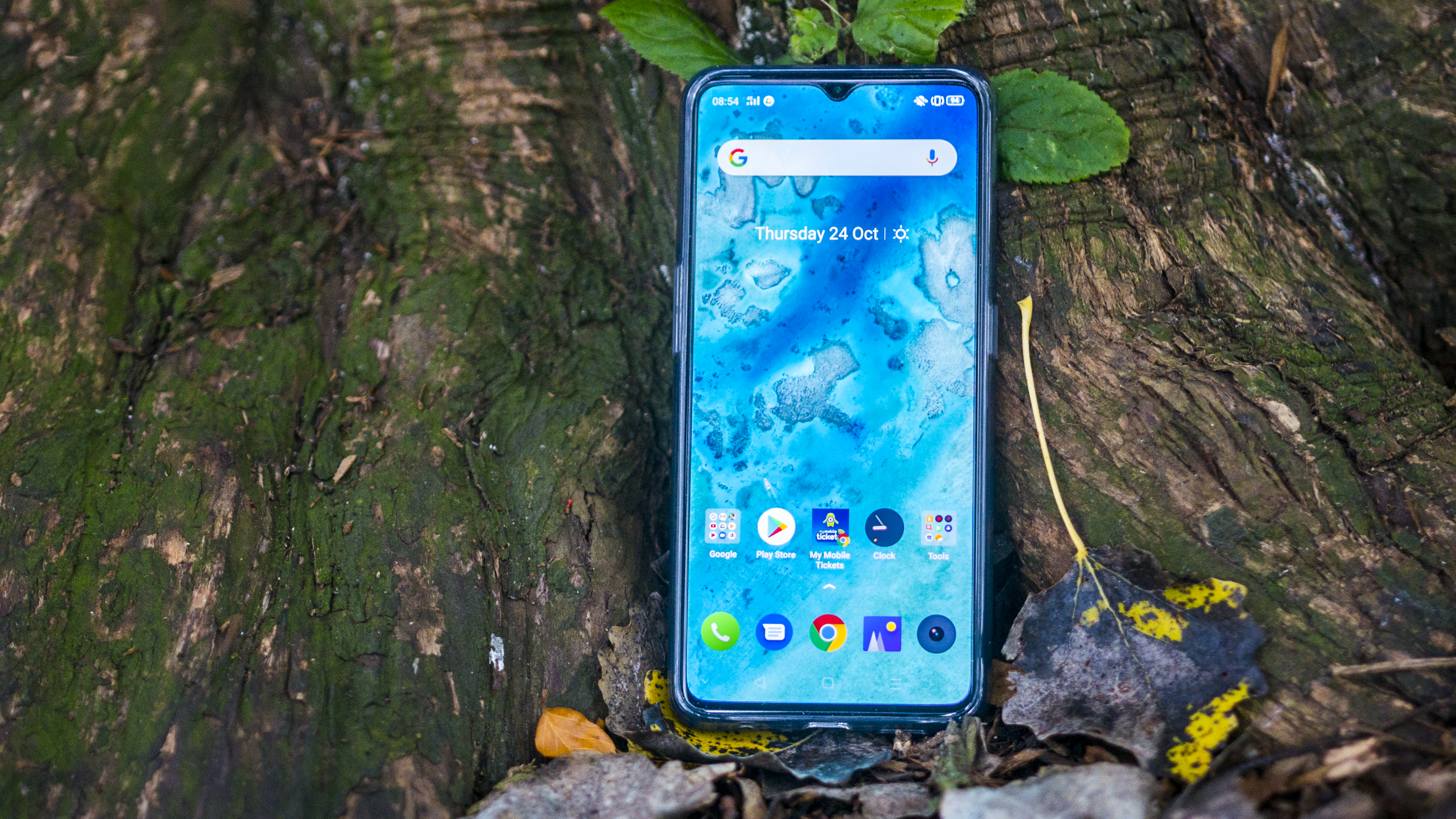
The Realme X2 Pro was the first widely-available phone to have a 64MP sensor, and while that’s lower-res than the 108MP sensor in the Mi Note 10, there are lots of other reasons to like this handset, chief among them its huge battery and 90Hz-refresh-rate screen.
Read our in-depth Realme X2 Pro review
Xiaomi Mi 9
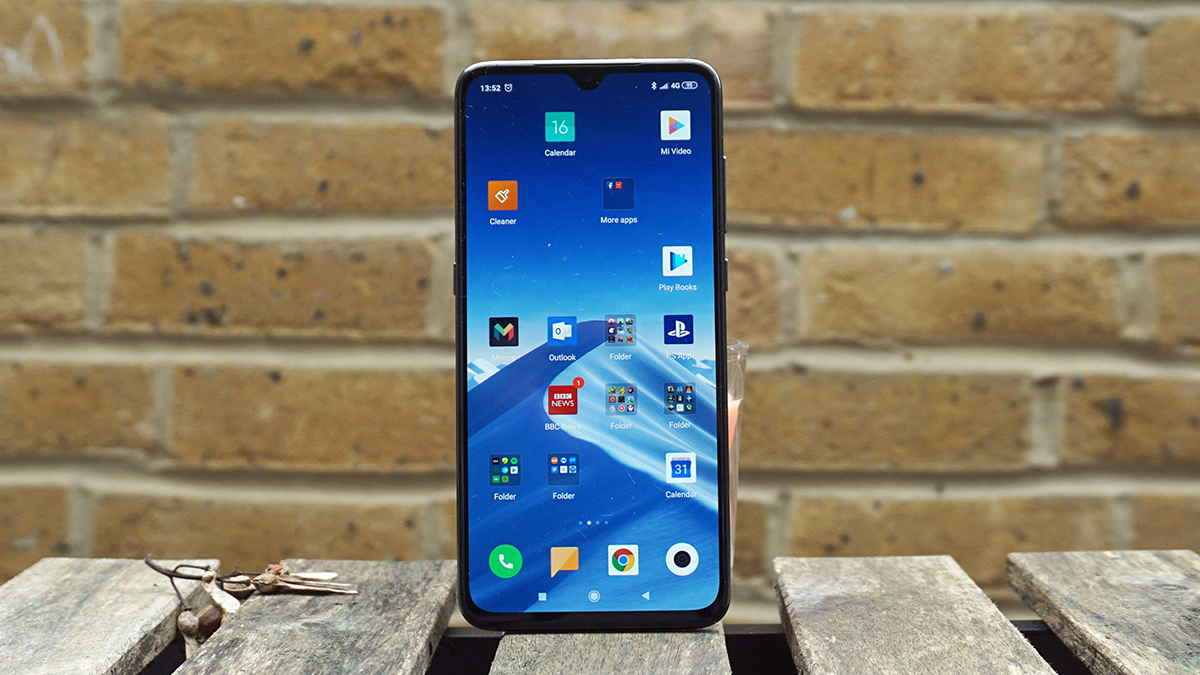
If you like Xiaomi phones but don’t need the brand’s newest device, the Mi 9 launched early in 2019, and it has the trappings of a decent mid-range phone, with no aspirations to premium status, at a distinctly budget pric. It’s pretty cheap, but the specs are nothing to turn your nose up at either.
Read our in-depth Xiaomi Mi 9 review

Tom Bedford joined TechRadar in early 2019 as a staff writer, and left the team as deputy phones editor in late 2022 to work for entertainment site (and TR sister-site) What To Watch. He continues to contribute on a freelance basis for several sections including phones, audio and fitness.
